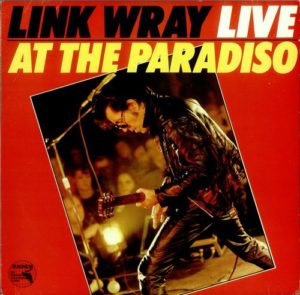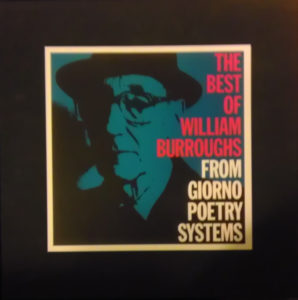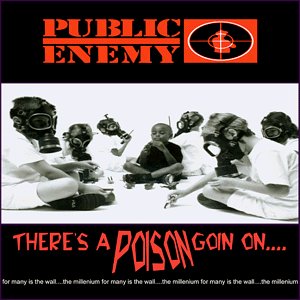Link to an article by Laura Durkay:
Month: October 2016
Link Wray – Live at The Paradiso
Link Wray – Live at The Paradiso VISA 7010 (1980)
Link Wray had an amazingly varied rock ‘n roll career. His early hit “Rumble” practically redefined rock guitar, introducing fuzz and distortion as desirable qualities. But he found little momentum in the years immediately after that, pursuing more surf-styled garage rock (Jack the Ripper, the “Missing Links” series) while also flirting with more clean-cut teen idol pop/rock (White Lightning: Lost Cadence Sessions ’58). Then by the late 1960s he briefly considered hippie rock (Yesterday — Today), before delivering a cult classic of swamp rock, Link Wray, and continuing in a country-rock vein (Be What You Want To) in the early 1970s. Then, along with a stint backing rockabilly crooner Robert Gordon, he transitioned to a slick hard rock sound in the mid/late 70s (Stuck in Gear). His rather good Bullshot featured a mostly modern rock sound, with a versatile band. That was followed by the concert recording, Live at the Paradiso. If the rest of his career drifted into retro revivalism, it still seemed worthwhile in that he kept the flame alive and stuck to a path that was good-natured and earnest — and at times quite decent (Barbed Wire). But maybe there was something more to the way he doggedly stuck with elements of rural elements in his music.
Point nine in the list of demands in The Communist Manifesto (1848) by Karl Marx and Friedrich Engels asked for:
“gradual abolition of all the distinction between town and country by a more equable distribution of the populace over the country.”
In a related way, one can look at purely urban “rock” (not “rock ‘n’ roll”) styles as being isolated from rural music. Of course, there have been a few artists who have tried to bridge this gap. Names like Ricky Nelson belong in that conversation. But so does Link Wray. (Much of the “country rock” and “insurgent country” genres — though certainly not all — actually doesn’t belong, given that these are mostly examples of ways that bourgeois urban artists appropriated and co-opted rural musical techniques while undermining any actual rural perspective).
Live at the Paradiso follows through with the hard rock sheen of Bullshot, drawing on heavy metal and even maybe slicker punk rock. There are plenty of Wray’s old hits or quasi-hits here (“Rumble,” “Rawhide”), plus some other early rock ‘n’ roll classics (“Shake, Rattle and Roll,” “Blue Suede Shoes,” “Be-Bop-a-Lula“). Even if nothing here reaches the heights of the single “It’s All Over Now Baby Blue” from Bullshot, it’s all pretty good from start to finish. There is plenty of energy (not a given, considering that Wray had one lung removed long ago and was 50 years old when he cut this record). But what shines through is an attempt to bridge the realms of urban and rural music, without subordinating one to the other. There is just something very likeable about this music, which doesn’t impose itself but stands firmly in its own place.
Christopher Ketcham – Above the Law: On the Prospects of Prosecutorial Reform
Link to an article by Christopher Ketcham:
“Above the Law: On the Prospects of Prosecutorial Reform”
Bonus link: “Corrupted Evidence: How the Department of Justice is Blocking Forensic Evidence Reform” (it should be noted that this bonus link article largely gives judges a free pass, for reasons not explained)
Aline Piva & Frederick B. Mills – What is a Coup? Analysing the Brazilian Impeachment Process
Link to an article by Aline Piva & Frederick B. Mills:
“What is a Coup? Analysing the Brazilian Impeachment Process”
Full Frontal With Samantha Bee
Full Frontal With Samantha Bee (2016- )
Director: unknown
Main Cast: Samantha Bee
For a time, it seemed like Samantha Bee had launched the most successful post-Colbert Report, post-Daily Show (with Jon Stewart) spinoff. It was a rare show with a feminist perspective. And yet, with her show’s unprincipled, theocratic endorsement of Hillary Clinton leading up to the 2016 Presidential Election, engaging in all the worst irrational tropes and hypocrisies, her show really undermined everything it might have achieved. The show regularly denounces Donald Trump and his supporters; Hillary Clinton and her supporters are hardly given any criticism — the tenor of the election cycle episodes has been, “well, obviously Hillary is better” without any substance to back up that sneering and superficial position. Third party candidates are occasionally mentioned, but usually only Gary Johnson of the Libertarian Party. They do mention and joke about Jill Stein of the Green Party, but usually that is to dismiss her (like a gag where they put the wrong name up in her place in a graphic that also showed Gary Johnson). But, see, anyone who watched the show before the post-primary election cycle was heavily underway might notice that Stein’s positions align much more closely with those expressed by the show’s humor. Maybe more glaringly, the show is tremendously hypocritical. Ronny Chieng, a correspondent for The Daily Show with Trevor Noah, did an October 6, 2016 segment called “The O’Reilly Factor Gets Racist in Chinatown.” He included clips from an episode of The O’Reilly Factor show in which a reporter goes to Chinatown in New York City and basically mocks the inhabitants with “gotcha” interviews (frequently with people who clearly don’t speak English, the only language the reporter seems to know). Now, such remote location “man on the street” gotchas can be done in a funny way (Robert Smigel did a “Triumph the Insult Comic Dog” bit in Quebec for Late Night With Conan O’Brien years ago that humorously insulted French-speakers in English, with an obvious nod to the fact that the interviews were preposterous). But the Full Frontal correspondents don’t do that. Instead, they do remote segments like the one on October 5, 2016 (“Rigged!”) in which they do “gotcha” interviews with patently uniformed and ignorant Trump supporters. As Paul Street put it, “Elite commentators love to mock and marginalize the childish mindset of those who think that everyday people (the rabble’) should actually be in charge of their own societal and political-economic affairs (imagine!) and thereby deprive elites of their supposed natural right to rule.” So, there were no “gotcha” interviews with patently uniformed and ignorant Clinton supporters — the audience is implicitly pushed to draw the conclusion that there are none — not to mention any of her corrupt cronies. The issue here is not that the Trump supporters are correct (the ones shown on air are mostly stupid and self-serving, at best). They aren’t, even if they have real grievances. The issue is that the show displays an obvious partisan bias, hypocritically engaging in more or less the same tactics as the Republican political far right in the service of the Democratic political center-right (and Full Frontal isn’t even on MSDNC, er, MSNBC!). It conflates rationality with liberal politics. Given how genuinely funny Samantha Bee is, it is a shame to watch her show sink into a mire of self-congratulatory neoliberal stumping for a particular candidate (Clinton). What a waste of talent. Perhaps the show will become interesting again once the election cycle ends. But viewers should cast a skeptical eye on it knowing what it devolved to during the 2016 election cycle.
If the best thing about the show initially was its feminism, consider how the following comment from Nancy Fraser fits (emphasis added):
“Mainstream feminism has adopted a thin, market-centered view of equality, which dovetails neatly with the prevailing neoliberal corporate view. So it tends to fall into line with an especially predatory, winner-take-all form of capitalism that is fattening investors by cannibalizing the living standards of everyone else. Worse still, this feminism is supplying an alibi for these predations. Increasingly, it is liberal feminist thinking that supplies the charisma, the aura of emancipation, on which neoliberalism draws to legitimate its vast upward redistribution of wealth.“
Like a magician using distraction to perform an illusion, Full Frontal focuses on one very narrow (if still important) set of issues in order to obscure and deflect attention away from numerous other extremely important issues. It’s worth thinking about what the show refuses to mock…
Rob Hunter – A Philosophy for the Propertied
Link to an article by Rob Hunter:
William S. Burroughs – The Best of William Burroughs from Giorno Poetry Systems
William S. Burroughs – The Best of William Burroughs from Giorno Poetry Systems Mercury 314 536 701-2 (1998)
Burroughs was the godfather of the Beats. And yet, his extensive career giving spoken word recitations is, in a way, just as significant as his writings themselves (most of his readings were of his own writings) — setting aside entirely his sonic cut-up audio field recordings and mixed media visual artworks. As a live performer, he worked his way through small venues, much like punk bands (and often in the same clubs that did punk shows). His intonation, pacing and inflection did evolve though. Listening to four CDs of material covering a long stretch of time reveals how he fine-tuned his delivery. He mastered his sneering, nasal delivery, with certain words drawn out for effect, speaking often in a kind of deadpan but breaking from it regularly for emphasis. And comparing these recordings from 1975 onward shows marked advancement over his 1960s recorded monologues.
Burroughs came from a fairly privileged upbringing and was highly educated. He mostly used that background to more effectively mock rich elites and to astutely document what goes on in the world outside the realm of respectability. He gets inside the self-important, smug and arrogant sense of entitlement in cutting, satirical narratives, which often explore basic countercultural themes and the realities of life for the poor. His aloof, profane, magnificently unsentimental, and often scowling demeanor had a way of depicting vileness with an icy frankness that makes his accounts endearing, in their own startling and unexpected way, fostering a kind of cabal or union of outcasts and freaks who are onto the cons too. As Barry Miles said about Burroughs in an interview,
“His overall concern was always to confront control systems and attack them. In literature it was usually done through humour . . . where he would take ideas to some absurd length which breaks through all the normal boundaries of good taste and decorum and it was often hilariously funny.”
No doubt, Burroughs exudes a kind of political libertarian populism, but it runs close anarchism. At his best (and this Best of collection surely lives up to delivering the man at his best) he could hilariously depict the “country simple” wisdom of the underclasses as fully aware of the grim power struggles playing out under the guise of “neutral” politics that just so happen to prop up elites (something that was most explicit in his essays and Cities of the Red Night). Burroughs was always on the look out for new techniques to disrupt the smooth functioning of oppressive social structures, taking particular glee in uncovering the overlooked (if not explicitly hidden) and elemental institutional mechanisms that maintain such relations between people. He can be delightfully ruthless in exposing the vile motives of the self-satisfied “pillars of the community,” like doctors, journalists, police, and so on. Burroughs’ characters are sometimes surprisingly conventional, even as he takes a very unconventional approach to developing and introducing them. Burroughs also knows how to deliver an iconic catchphrase, taking colloquialisms to new heights by building so much around them to contextualize their lasting value. He can also summon a sense of paranoia like few others. And all this is not to mention his pervasive interest in fringe theories: UFOs, orgone accumulators, and that sort of thing.
Burroughs’ writings were often picaresque, heavily influenced by Céline, but also drawing on the influence of Denton Welch, Rimbaud, Genet, Conrad and others. The picaresque style lends itself to short — and humorous — readings, the excerpts able to stand on their own. But from Welch, Burroughs also drew on an ability to describe the ordinary in an uncommon way, and how to reveal with honesty that which is obscured. Burroughs is able to summon and expand on those qualities in his readings.
As to the actual recordings here, they are mostly arranged chronologically by the date the underlying text was published — irrespective of when the audio was recorded, to some extent. Then the last disc features a segment called “Nothing Here Now But the Recordings,” which are not based on any previously published texts, but includes lectures and audio experiments, such as the “inching” technique Burroughs employed by manually moving magnetic audio tape through a recorder.
Burroughs actually made many, many commercially released recordings. This set is exclusively material released on John Giorno‘s label Giorno Poetry Systems, often originally released on albums with contributions from many different performers (rather than exclusively from Burroughs). There are many more Burroughs recordings out there, very few of which were ever sold in any quantity. What is here focuses primarily on spoken word recitations, mostly readings of Burroughs’ own published writings. The recordings not present here delve more fully into experimental sound collages (see Real English Tea Made Here) and collaborations with musical groups (see Spare Ass Annie and Other Tales, The Black Rider). But there are also various other spoken word albums Burroughs made that were simply made for other record labels (see Call Me Burroughs, Break Through in Grey Room, etc.).
Reading Burroughs is near mandatory. But a complete picture of the man’s work requires exploring his other efforts, especially his audio recordings. The Best of William Burroughs From Giorno Poetry Systems makes an ideal introduction to those audio recordings. And just as to Burroughs’ outlook, a world that continues to lurch closer to a police state can stand to learn from Burroughs’ intelligent studies in ways to counteract those tendencies.
Sand Avidar-Walzer – Welcome to Interzone
Link to an article by Sand Avidar-Walzer:
My Own Mag
Link to RealityStudio’s archive of issues of Jeff Nuttall’s independent magazine:
Public Enemy – There’s a Poison Goin On….
Public Enemy – There’s a Poison Goin On…. Atomic Pop AP001 (1999)
After attempting to rethink the basis of Public Enemy’s music on the He Got Game soundtrack, which garnered mixed reviews at best, PE rethought their music again on There’s a Poison Goin On. In a way, it sort of set the tone for a lot of what the rest of PE’s career would be about. He Got Game catered to the more melodic R&B-inflected style of hip-hop that was gaining popularity at the time. The title track was great, but the rest didn’t impress. With There’s a Poison Goin On the group sort of splits the difference between more melodic beats and singing/raps and their old style. The results? Well, music nerds and hip-hop heads debate the best Wu-Tang Clan solo albums. This might be the best Wu-Tang “solo” album made by people unaffiliated with Wu-Tang! Chuck D is political, but less so than a decade earlier. “World Tour Sessions” is the catchiest thing here, and it has a little bit of Chuck’s politics, but it has a softer hook than something like their early 1990s hit “Can’t Truss It.” “I” is great. This was DJ Terminator X‘s last album with the group until a surprise reunion with the group more than a decade later.
Aside from the purely musical aspects of the album, Public Enemy established their new business model here. They signed with a new label dedicated to online distribution (though this was released in physical format too). The label flopped, as broadband internet access was not widespread yet. But more than distribution channels, the group was ready to sidestep major labels and stick with a more independent path, allowing them to try new things and have more control over their work.
This is a middle-of-the-pack PE album, but one that is worthwhile for fans who have already heard the classics.



